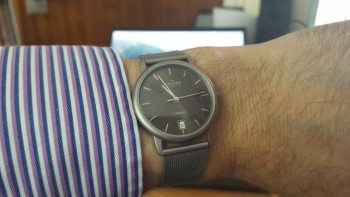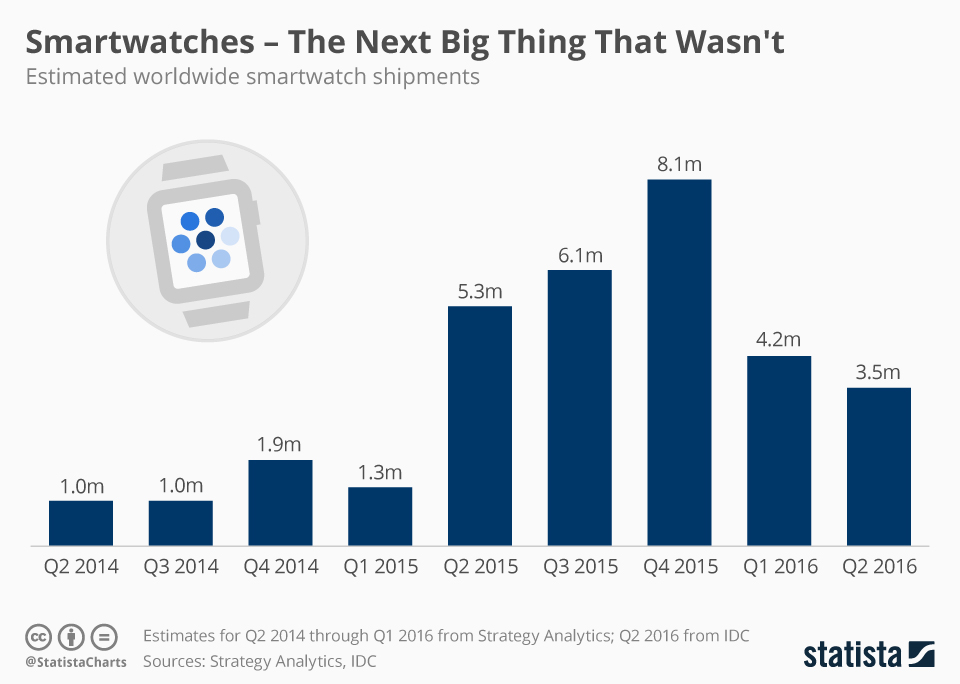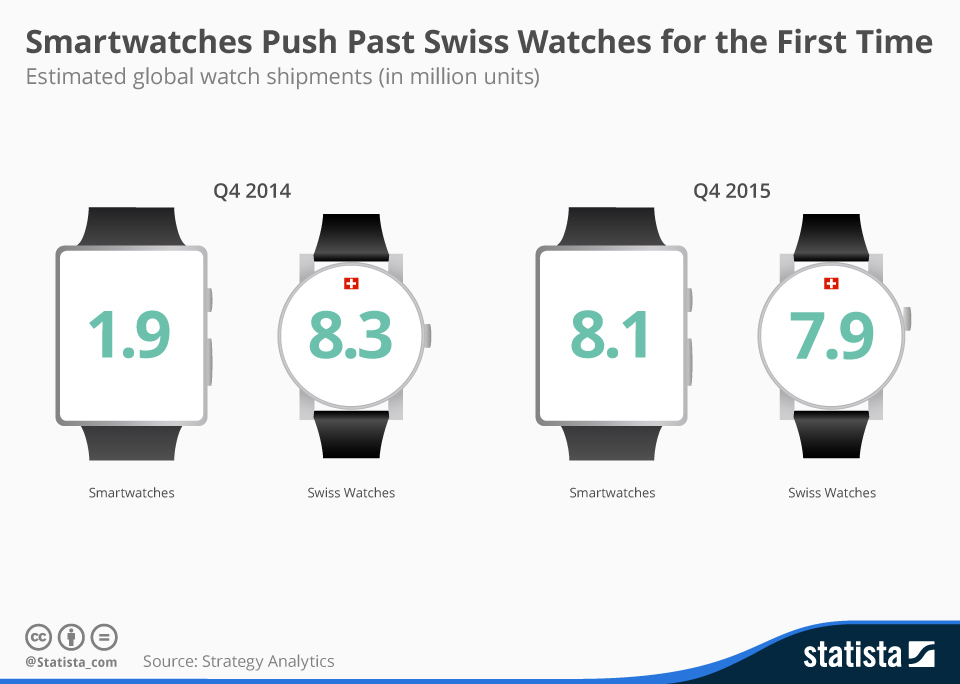… and will they always be? A couple of weeks ago, I mislaid my watch. I was at home and it wasn’t one of those cases of ‘travel attrition’ (I have a theory that if I checked into and out of enough flights and hotels, I would eventually end up with no possessions and naked!). I’m an early adopter of technology, so the non-appearance of my watch should have meant an opportunity to jump into the world of smartwatches. However, I haven’t found myself passing dead time by checking reviews of Apple or other smartwatches. Why not?

 I’ve had a watch more or less continuously since I was around seven or eight years old. At the time, learning to tell the time and owning such an (then and relatively) expensive and fragile object was seen as a kind of low level maturity marker – a bit like riding and owning a bike. Of course, I also loved children’s science fiction and avidly read “Dan Dare” (Pilot of the Future) in “Eagle”, a UK weekly comic (Wikipedia reports that Arthur C. Clarke was a science and plot adviser for early issues). I’m sure during that time I became aware of Dick Tracy, probably the most famous ‘early adopter’ of the idea of a communicator watch.
I’ve had a watch more or less continuously since I was around seven or eight years old. At the time, learning to tell the time and owning such an (then and relatively) expensive and fragile object was seen as a kind of low level maturity marker – a bit like riding and owning a bike. Of course, I also loved children’s science fiction and avidly read “Dan Dare” (Pilot of the Future) in “Eagle”, a UK weekly comic (Wikipedia reports that Arthur C. Clarke was a science and plot adviser for early issues). I’m sure during that time I became aware of Dick Tracy, probably the most famous ‘early adopter’ of the idea of a communicator watch.
If I look at the watch I own, I guess, like many, it reflects a sense of how I want to present myself. I have a very light, very thin, but simple analogue (quartz) watch and have never gone for the Rolex look. I remember a business colleague who met someone at a party that I had talked about in disparaging terms and who said to me “Within 15 minutes I knew he had a Rolex and a Mercedes”, so I’ve never bought heavily into the ‘bling’ mentality.
Funnily, I have never seriously wanted one of those ‘sports tachograph’ watches, with multiple dials and knobs.
I also like the idea of having to rarely pay attention to maintenance of the watch. When selecting my current watch, if I could have got one that had both wireless synchronisation and some kind of solar power (so no battery), that would have been perfect, but, of course, it would have impacted the size and weight. An earlier watch I bought was relatively large and heavy, but was an early analogue quartz watch (I remember that I enjoyed the step tick of the seconds, rather than the sweep of my previous watches).
Anecdotes are not the Same as Research
Anyway, these thoughts about watches and smartwatches, were triggered at this time by a chart I saw this week that showed that I’m not the only consumer that hasn’t been excited by smartwatches. As we analysts often say, anecdotes are not the same as research, so let’s look at the numbers.
According to the theories of technology diffusion, the innovators buy the products first, then the early adopters see that the innovators are happy and follow them. It seems that simply hasn’t happened.
Thinking about all my geeky friends, I can only think of one that has really expressed pleasure at having an Apple Smart Watch. She uses it all the time and when I saw her recently, she was happy to demonstrate how good Siri was at allowing her to respond to a message using voice, without the need for a keyboard (although, if I remember correctly, it didn’t work).
Looking at data from Strategy Analytics and Statista, the Swiss watch market was around 28 million units during 2015 and in Q4 2015. Smartwatch sales went past Swiss watches for the first time in Q4 (a key time for watch sales) at 8.1 million, compared to 7.9 million Swiss watches. However, in Q2 2016, Swiss watches sold 6.1 million units, down from 6.8 million last year, but well above the smartwatch level of 3.5 million.
It’s interesting that the overall volume of Swiss watches sold in 2015 was only slightly down compared to 2014 (according to the Federation of the Swiss Watch Industry), despite the number of smartwatches sold, which also highlights that the buyers are different. The brands are also different – only 1% of the smartwatch industry was taken by traditional watch brands in Q4 2015.
So, it seems to me that the smartwatch concept is just not there yet, but, as my friend suggested, voice input and audio output may be the key drivers for smartwatches. A traditional looking watch, the size of my current one and that doesn’t need attention for charging, but that could talk to the cloud for messaging, voice and with GPS, could be an interesting product for me. Oh, and one that costs less than a smartphone.
I suspect we’re a long way from that, sadly.
Bob
(By bizzare coincidence, I found my watch again during the writing of this article).
 My watch is back where it belongs
My watch is back where it belongs



